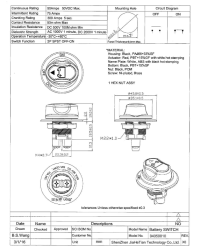Just wondering how many people have a solar power isolation switch fitted to their system?
Something like this:

 www.windandsun.co.uk
www.windandsun.co.uk
Also was your system self fit or not?
Trying to decide whether to fit on or not?
Something like this:

Kraus & Naimer DC Isolation Switches
Cost effective switches with a simple easy to install design.
 www.windandsun.co.uk
www.windandsun.co.uk
Also was your system self fit or not?
Trying to decide whether to fit on or not?







